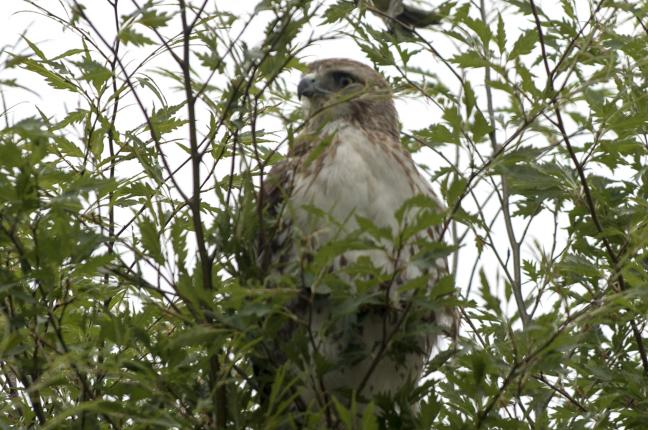
Red-Tailed Hawk Takes Up Residence on White House Grounds

WASHINGTON, June 4 (UPI) — Security is certainly tight at the White House — but only for humans.
Wild animals often take up residence somewhere outside the presidential residence among the manicured hedges and landscaped grounds. Most recently, a juvenile red-tailed hawk was observed exploring the grounds and using the east wing’s perches as its favorite spot.
“This week, I, along with others at and around the White House have been enjoying the company of what appears to be a young red-tailed hawk that has taken a liking to the White House grounds,” White House Principal Assistant Director for Environment & Energy Tamara Dickinson wrote earlier this week.
From its perch, experts say, the hawk has an expansive view of the grounds — ideal for hunting and plotting its predatory maneuvers.
“The hawk was probably attracted by the relative lushness of the White House compared with the rest of D.C.; a thriving population of gray squirrels on the grounds likely sealed the deal,” Audubon’s Emma Bryce wrote.
While noting the hawk’s arrival, Dickinson said that environmental issues resulting from climate change have impacted birds worldwide.
“As we admire and appreciate the animals that have learned to live in our backyards, it’s important to remember that it’s becoming increasingly difficult for much of the world’s wildlife to adapt to the changes that humans are imposing on our shared planet,” she wrote. “Rising average temperatures, more extreme weather events, and sea-level rise are all forcing bird populations out of their natural habitats and ranges.”
The red-tailed variety, however — which is the most common hawk in North America — is affected little by climate change.
“They may also be one of the rare beneficiaries of climate change,” Bryce wrote. “The birds are already comfortably spending months in the city, and increasingly, are even starting to nest in urban centers, too.”
Although the yet-to-be-named raptor has staked out a pretty plush new residence, it is still getting to know its wild neighbors. A smaller bird was seen pestering the hawk near the ledge on Thursday, perhaps trying to establish the pecking order — or maybe it was just welcoming the new feathered friend to the neighborhood.






